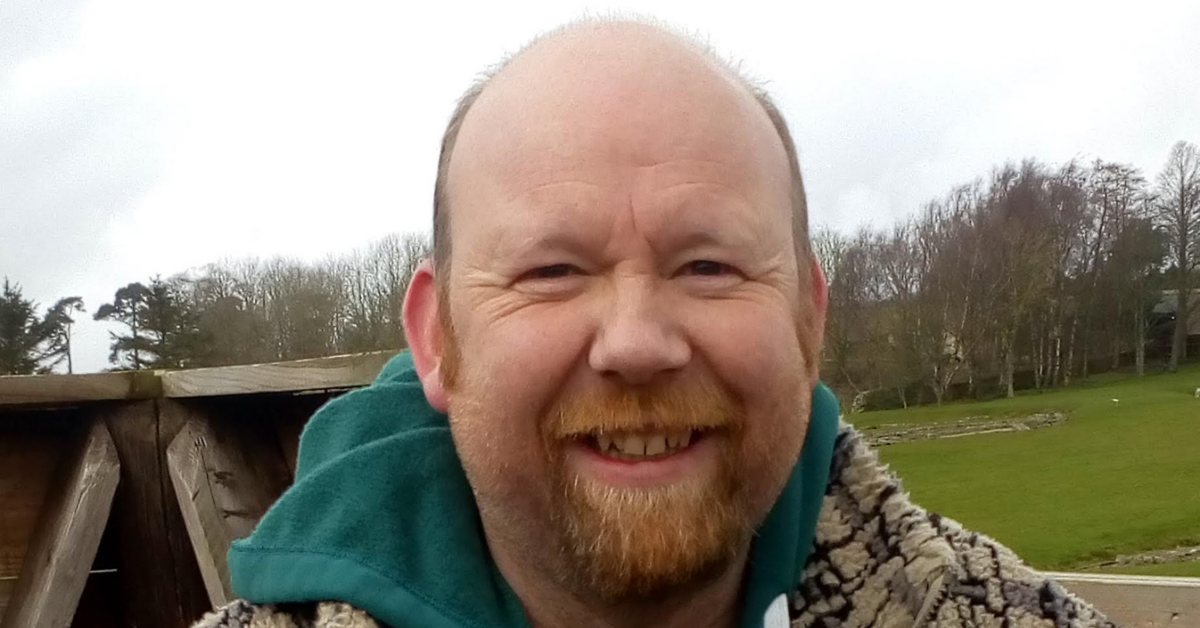A Ripon man whose incurable blood cancer was missed for more than six months despite having lumps the size of golf and cricket balls on his head has vowed to ensure others don’t ever have to endure what he did.
Carl Tonks, 49, saw four separate GPs but each of them assured him the five large growths on his head were just benign cysts. The lumps couldn’t be removed on the NHS as it doesn’t cover cosmetic surgery.
After months of back and forth to his GP surgery, he eventually changed practices and booked a private appointment with a cosmetic surgeon who confirmed his worst fears.
Far from benign cysts the lumps were in fact plasmacytomas, a rare complication of the blood cancer myeloma.
Carl is now backing blood cancer charity Myeloma UK’s campaign to raise awareness of the hidden impact of delayed diagnosis on patients’ quality of life. He is also supporting the charity’s calls to make sure quality of life is included as a key part of the government’s 10-year cancer strategy.

“Within 45 seconds the consultant realised they weren’t cysts and that there was something seriously wrong,” said Carl. “He was so concerned he did a blood test immediately. I was diagnosed with myeloma six day later.”
Carl was just 42 years old.
“Until I saw a specialist, I had never had a blood test or any major physical examinations, but a simple blood test would have shown something wasn’t right,” added Carl, who works as the head groundsman at Ripon Racecourse. “I saw 4 GPs and not one of them picked up on anything or questioned it. Of all the things on this whole journey, that’s the thing that got to me: that there was no blood test.
“One or two lumps started showing in August 2014 and I had a stiff neck. As time went on, they started getting larger. I had five lumps in total. By December one of them was the size of a cricket ball and two were the size of golf balls. But they kept saying they were cysts and that the neck issue was probably age.”
By February 2015, the lumps had grown so large not even a hat could hide them. He was gripped by nausea and in such pain he ended up bedridden for days. Yet his GP practice declined to make a home visit and instead prescribed diazepam. Carl spiralled into depression.

“I was bedridden and couldn’t move for a week. I never cared about my appearance but my head was not normally shaped and it started to bother me: I was embarrassed at my appearance.
“The status of limbo had a major impact on my mental health. By the end of March, I was very lethargic and low. I was really struggling with the physical side of my job.”
By the time he was diagnosed, Carl had suffered severe kidney damage. To this day his kidneys “are about 30% efficient.”
Scans also revealed further growths on his spine, shoulder blades and sternum.

24,000 people in the UK are diagnosed with myeloma each year.
Despite being the third most common type of blood cancer, myeloma is especially difficult to diagnose as symptoms, chief among them pain, easily broken bones, fatigue and recurring infection, are often linked to general ageing or minor conditions.
Patients experience significant delays in getting diagnosed, with 50% waiting over five months. 34% of myeloma patients visit their GP at least three times before getting a diagnosis. 31% are diagnosed via an emergency route.
These are some of the longest delays out of any cancer in the UK.
According to Myeloma UK’s landmark report, ‘A Life Worth Living’, which is released today, Carl is by no means an isolated case.
Based on feedback from 1,344 patients and carers, the report found that:
• 50% of patients reported having received a delayed diagnosed.
• 49% of patients had been left with avoidable life-altering complications after their cancer was repeatedly missed.
• 60% of patients with a delayed diagnosis reported reduced mobility/physical activity.
• 36% of patients with a delayed diagnosis reported a major mental health impact.
• 34% of patients with a delayed diagnosis had spinal fractures.
• A delayed diagnosis is significantly more likely in younger patients: 48% of patients reporting a delayed diagnosis were aged 18-64, compared to 35% of people with a timely diagnosis.
Although it is one of the hardest cancers to diagnose, there are currently no specific diagnosis targets or timeframes for myeloma to be caught early or within a reasonable amount of time. This means there is no way to curb delays, improve diagnosis or patients’ experience.
Myeloma UK Acting Director of Research and Patient Advocacy, Shelagh McKinlay, said:
“We cannot allow the lives of patients like Carl to be diminished by avoidable delays in diagnosis. The quality of life of people living with myeloma has never been more important, with advances in treatment meaning that patients are now able to live longer than ever before.
“Delayed diagnosis is well known to increase the likelihood that patients will experience two or more serious complications. Yet, there are still no specific diagnosis targets to make sure the disease is caught and treated in time and to tackle unacceptable and truly harmful delays. This is doubly unfair since we know outcomes for myeloma are already so poor.
“Whether through severe and chronic pain, spinal fractures, kidney damage and other complications, myeloma patients are being condemned to a life of limitations and pain because they were diagnosed far too late. From the very start, their potential to live well is severely restricted, no matter what treatments they end up receiving – the damage is irreversible.
“With a new ten-year cancer strategy on the horizon, now is the time to put quality of life at the heart of government policy.”
Following rounds of chemotherapy, Carl received a stem cell transplant in November 2015. He’s been in remission ever since.
While he’s responded well to treatment, his life will never be the same again. And Carl is still grappling with the fact that his condition could and should have been picked up much sooner.

He now hopes that sharing his story will help Myeloma UK to raise awareness of the impact a delay in diagnosis can have on patients’ quality of life and ensure others are spared unnecessary physical and psychological pain and potentially avoidable complications.
“Everyday life is slightly wearing,” he added. “I don’t know what I would do without my wife. I can only work full-time because she takes care of everything at home. I don’t hold a grudge against anybody because myeloma is a rare thing. But the thing for me is that looking back they never touched my head or measured the lumps to see the progression.
“It’s strange. In a way I was lucky that you could visually see that something was wrong – a lot of people with myeloma have broken bones, which isn’t apparent – but even then, it wasn’t picked up anyway. I’m not who I was before the diagnosis; things have changed. Doing a simple blood test would have shown I was anaemic and that something was wrong. It didn’t need to be that hard.”
You can read Myeloma UK’s ‘A Life Worth Living’ report here: www.myeloma.org.uk/closethegap






